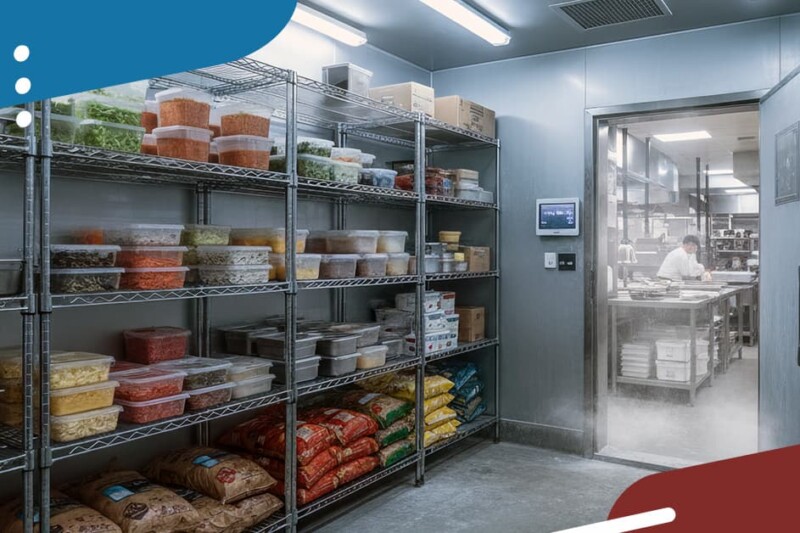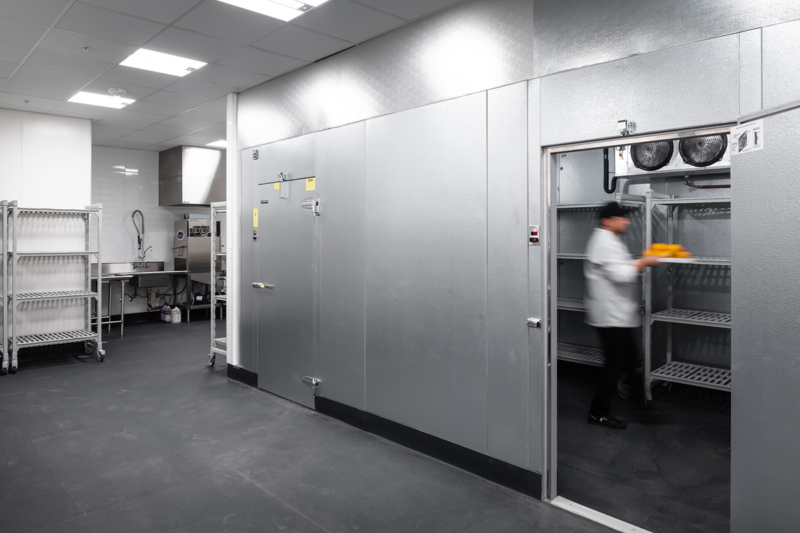Sizing Up Mini Combi Ovens
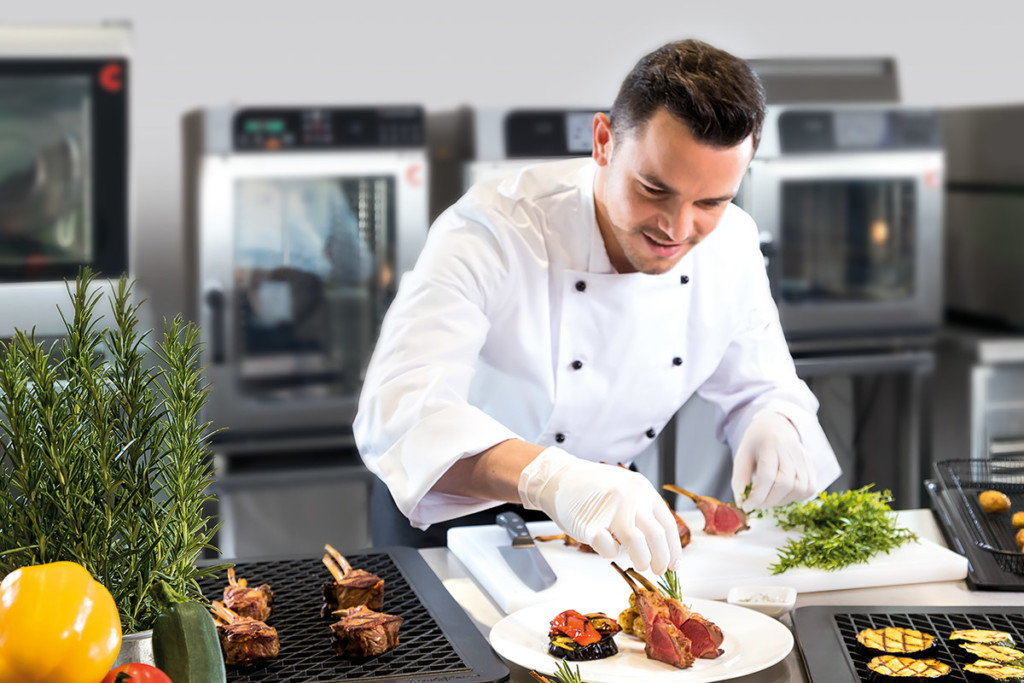
With the foodservice industry evolving faster than ever before, it was inevitable that the combi oven—the multi-use miracle of the commercial kitchen—would be slotted into more applications and enlisted to do new jobs.
The mini combi oven category eables foodservice beyond the standard restaurant kitchen. These small, countertop units are proliferating in convenience stores, supermarkets, ghost kitchens, catering operations, coffee shops, bars, food trucks, corporate dining rooms, college food courts, nursing homes, stadiums, conference centers—anywhere there’s a call for steamed, roasted or baked foods, even in small quantities.
In many cases, ventless hoods (sometimes integrated with the combi) allow the unit to be run anywhere there’s access to electricity and water, without the need for a conventional Type I hood overhead. Some mini units are UL-listed for vent-less operation even with no hood. (Local codes prevail; check with your local inspector before purchase.)
“You would be surprised how many items you can cook simultaneously,” says one corporate chef, speaking to the fact that many combis—even mini models—allow for different foods to be cooked on separate shelves with various cook times. “Breakfast programs in convenience stores are now in a perfect situation to create an egg sandwich, with eggs, bacon and hash browns all done in the same configuration.” Because the combi can keep up with variable cooking demands throughout the day, there’s little or no need for additional holding equipment, which can eat up valuable space.
That’s not to say that mini combis aren’t popping up in traditional restaurant kitchens, as well. In fact, with square footage at a premium, they’re stacking up. “A stack configuration gives twice the cooking flexibility in the same footprint and under the same recirculating hood,” says a resource manager at one manufacturer. “Two stacked combis are more versatile than one tall unit,” this expert argues: “You can be steaming or grilling in one mini combi, and proofing and baking in the other at the same time.”
Mini combis also can be placed on a back counter or built into a wall. A combi that floats in the wall frees up counter space at a work station.
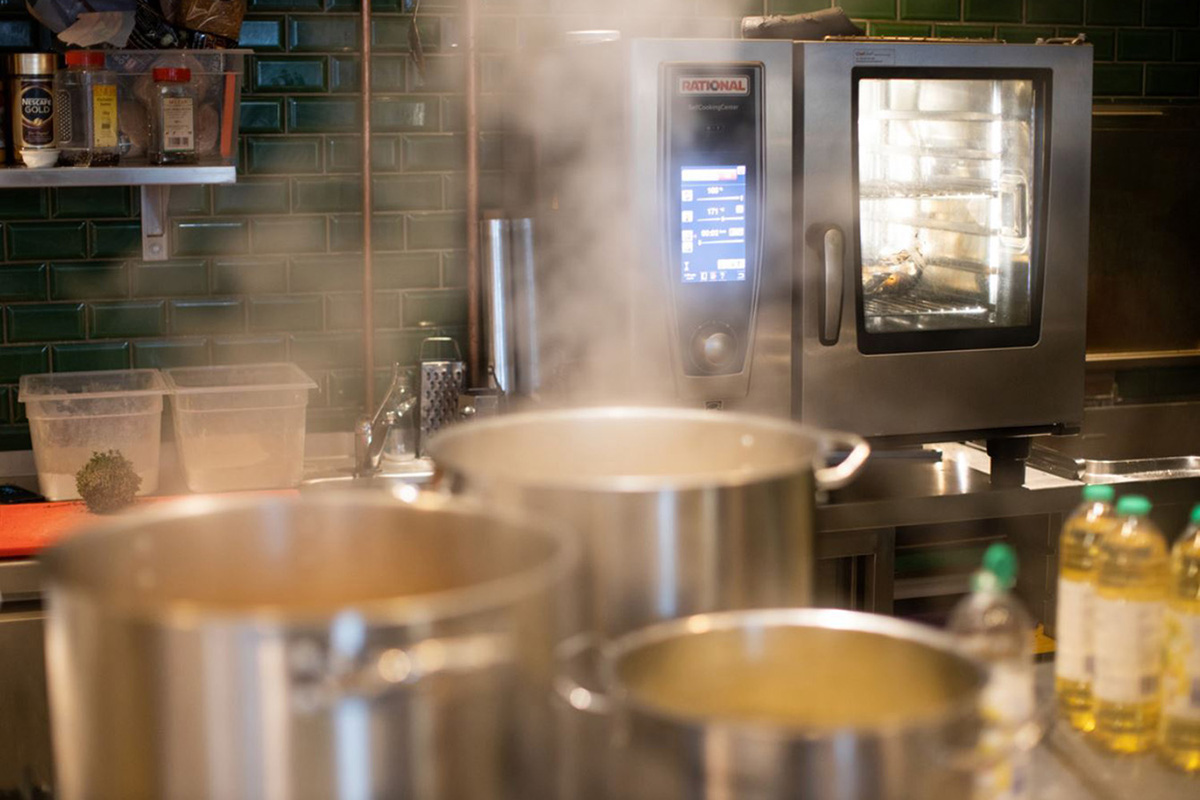
Mini combi ovens are ideal for packed kitchens as they squeeze into tight spaces. Measure the footprint and height as well as door-swing clearance to make sure the model you’re researching will fit.
What’s a Mini Combi Oven, Anyway?
The narrowest mini combis are only about 20-in.W, while others are a few inches wider. At least one manufacturer sacrifices the skinny silhouette, adding about 5 in. to the unit’s width to place controls conveniently and safely at the side rather than above the oven door.
Height also varies. One manufacturer received NSF approval for a model that doesn’t require the 4-in. legs that are standard on other mini combis—a big help where there are issues with ceiling height clearance.
Note that mini combis require less door-swing clearance than standard-size combis, reducing their footprint even further. Some manufacturers also offer a left-hand door option.
Minis always are electric, most are boilerless models, and some are UL-listed for ventless operation.
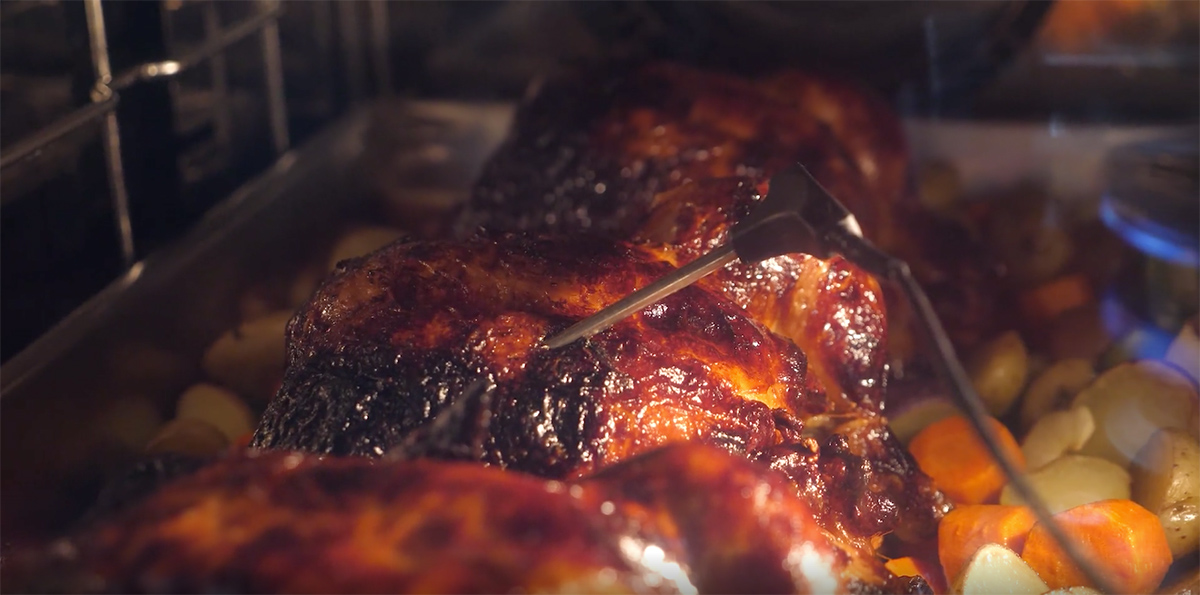
Core temperature probes measure the internal temperature of the food product without employees having to open the oven door. The probes detach for cleaning and sanitizing.
Combi Oven Advancements
Manufacturers have gradually refined the easy-to-understand digital controls on combis.
While a couple of manufacturers retain simple push-button controls as an option, most mini combis have electronic controls with icons and/or color coding to indicate cooking programs that even staff with little training can use. “Our controls are Androidbased,” says one corporate chef. “People can walk up to the controls and understand them intuitively, because they’re similar to the technology they use on their phones.”
Operators can preset multistep cooking programs; manufacturers offer both recipes and culinary assistance. Or chain headquarters’ staff can customize the cooking programs and input them via a USB port or remotely via the internet. They also can remotely monitor certain combis.
Inside the mini combis, manufacturers have tinkered with heating elements, steam systems and fan modes over the past few years to achieve greater precision in cooking results.
Some manufacturers introduced combis (both minis and full-size) that sense when employees slide pans in or out and recalibrate the cooking program accordingly—meaning that operators can cook different foods for various lengths of time on multiple shelves, adding pans throughout the day.
Combi options include a browning bar in the cooking cavity; a couple of manufacturers offer a smoker function (typically installed in the factory when the combi is built, but sometimes available for later purchase).
“Operators who didn’t think they could serve relatively high-end foods are seeing that the mini combi can really expand the menu,” says one product specialist. “They’re adopting menu items like high-end smoked chicken wings at a stadium instead of just hot dogs.”

Some additional features to consider include whether the unit comes standard with USB capabilities for HACCP data, LED interior lights or tray supports with an anti-tipping system.
Questions to Ask When Combi Oven Shopping
To find a mini combi oven that will be the best solution for you at the right price, here are key points to consider, according to the product experts we consulted:
What foods will you cook in the combi, in what quantities and at what times of day? Interior cavity size varies among mini combis, as does the type of pans accepted (?-size Gastronorm pans for some units, half-size or full-size pans in other models). Combis that allow staff to add and remove pans while the unit is in operation save time and offer additional menu flexibility.
Will you use the combi to cook raw meats? Unless the unit is UL KNLZ-listed, you’ll need a traditional Type I hood rather than a Type II hood or ventless exhaust system. Specifically, if the effluent from your combi will contain 5 mg or more of grease per cubic meter at least some of the time, a Type I hood will be required.
Where will you install the combi? Mini combis fit into tight spaces, but footprints, heights and door-swing clearances all vary, so analyze your space and staff traffic patterns before purchasing either a countertop combi, double-stacked combis or a wall-mounted model. Some manufacturers offer decorative colored fronts for combis near the dining room or behind the bar that will be seen by customers.
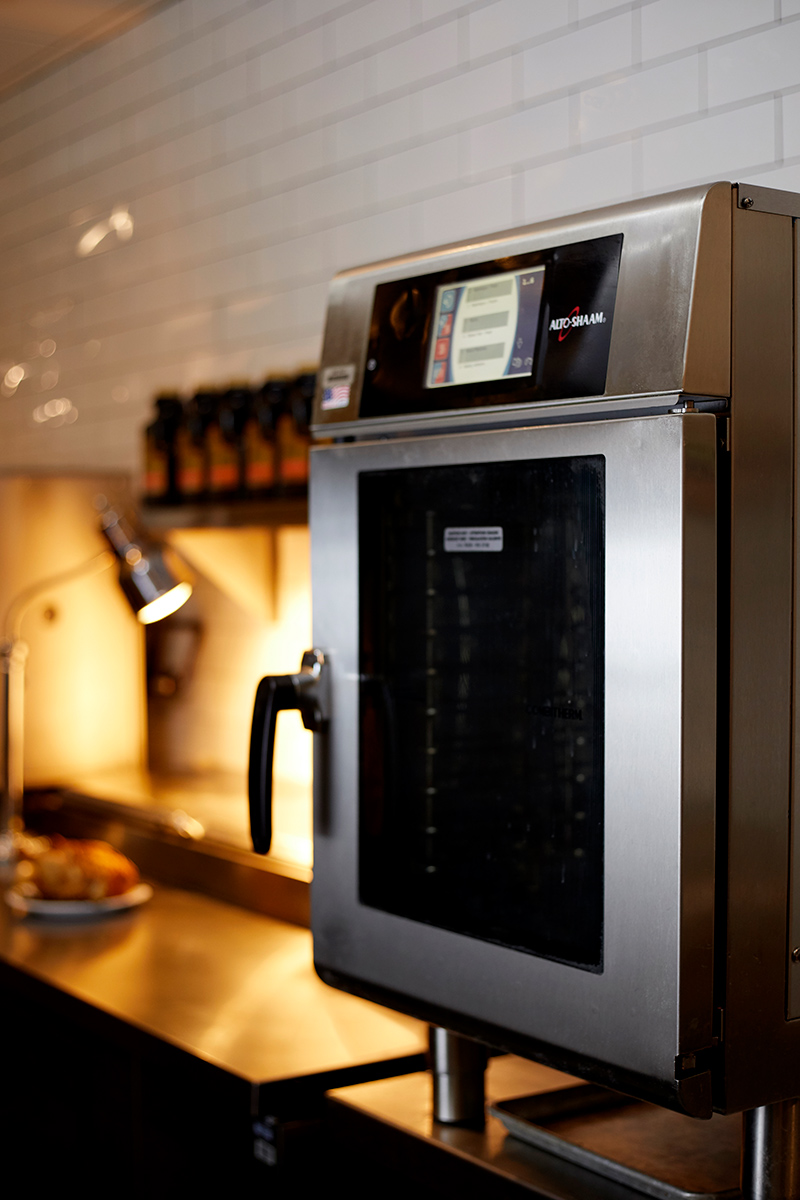
Check that the place where you plan to install the combi oven has the right electrical service and meets water requirements.
Do you have appropriate electrical and water service? You’ll need at least 208V or 240V, one- or three-phase electrical, water service for the water that will be injected into the unit to create steam and a water drain. If the installation location is missing any of those, you’ll incur extra costs.
How’s the water? “The quality of the water supply differs across the country, but a combi almost always demands a filter,” says one company’s vice president of combi sales. A poor match between your water and your combi can mean less efficient operation or breakdowns requiring service calls or even voiding the warranty. Combicompanies provide free water testing so they can recommend the proper filter. If the water contains dissolved solids or heavy metals, you may need a reverse osmosis system, but be aware that 3 gal. of municipal water produce only 1 gal. of reverse osmosis-filtered water—something that you may notice on your water bill.
Does the manufacturer offer an authorized provider network in your area for installation and service? Because water and electrical issues can be complicated, factory-authorized installation can mean fewer problems later. Switch-out of water filters and cleaning of limescale can be part of the regular service schedule.
What’s the warranty? A one-year parts-and-labor warranty comes standard for this type of product; at least one manufacturer offers a two-year parts-and-labor warranty, and others sell optional warranties past the first year at an additional cost.
Mini Combi Oven Gallery
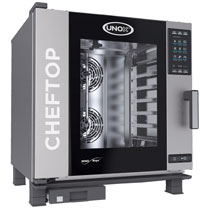
UNOX
CHEFTOP MIND.Maps Plus Compact is the ideal solution for professional kitchens requiring maximum performance in the smallest footprint. Use the combi oven for grilling, frying, roasting, browning, smoking, steaming and much more. SENSE.Klean is an automatic washing system based on actual oven use. Model measures 21-in.W x 34-in.D x 25½-in.H and holds five trays Gastronorm 1/1.
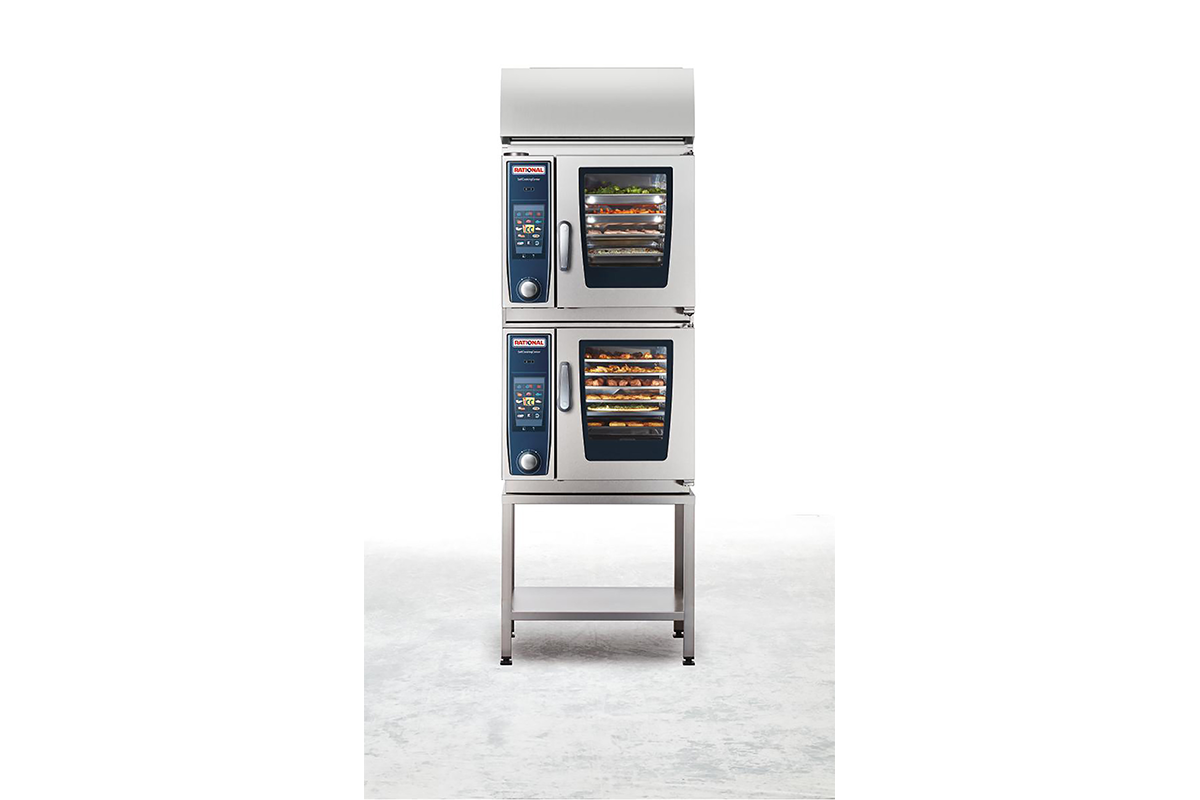
RATIONAL
The SelfCookingCenter XS ensures quality and efficiency with intelligent assistance, dynamic air circulation for consistency without supervision and a fresh steam generator with no buildup of limescale. Automatic cleaning can be done at any time, even overnight. A single unit accepts three Gastronorm 2/3 (1½ in.) or Gastronorm 2/3 (2½ in.) or four half-size sheet pans, and measures 25¾-in.W x 21⅞-in.D x 22⅜-in.H. Two stacked units are pictured.
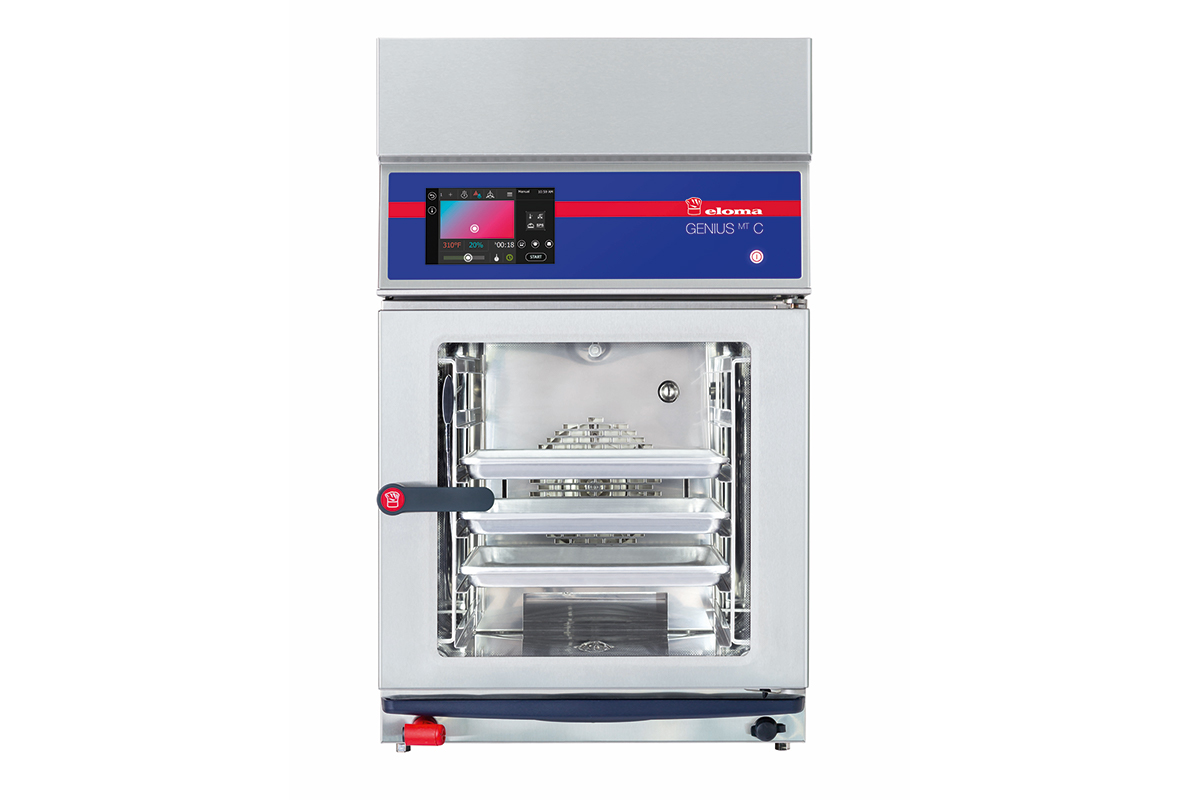
ELOMA
The Genius MT C1-1 is a boilerless, 20½-in.W, full-feature combi oven. The capacity of six half-size sheet pans (18 x 13) or five 12 x 20 steam table pans enables high-volume production in tight spaces. Stackable and fitted with the optional condensation hood, the GMT C1-1 is the ideal multifunction tool for busy small kitchens and stores. Additional features include an intuitive touch screen and standard AutoClean function. Unit measures 31¾-in.D x 33½-in.H.
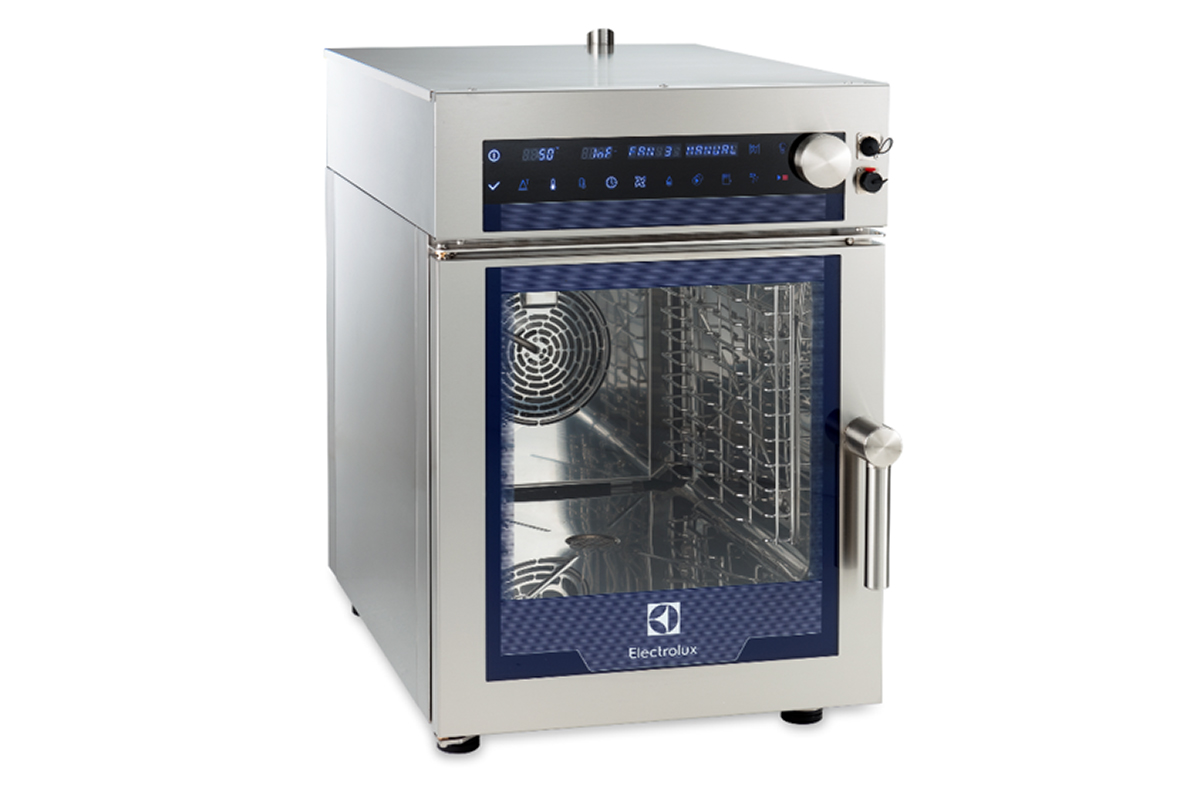
ELECTROLUX
Available in June 2020, the MultiSlim is an eco-friendly, compact, robust combi oven from Electrolux Professional. Holding up to six 12 x 20 hotel sheet pans, the combi oven works well for kitchens with a small footprint or to complete cooking-suite projects. It measures about 20-in.W x 32-in.D x 30-in.H.
professional.electroluxusa.com
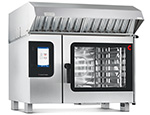
CONVOTHERM
Convotherm’s mini combi oven series features more than 10 versions (three different sizes) to meet a range of needs. All have a width of 20¼ in., which means they can fit anywhere space is at a premium. Features include easyStart (automatic cooking with product profile), Press&Go (automatic cooking using quick-select buttons) and the ConvoClean system (fully automatic cleaning). The mini eT 6.10 holds four 12 x 20 steam table pans at 2½-in.D; it measures about 36-in.D x 33-in.H.
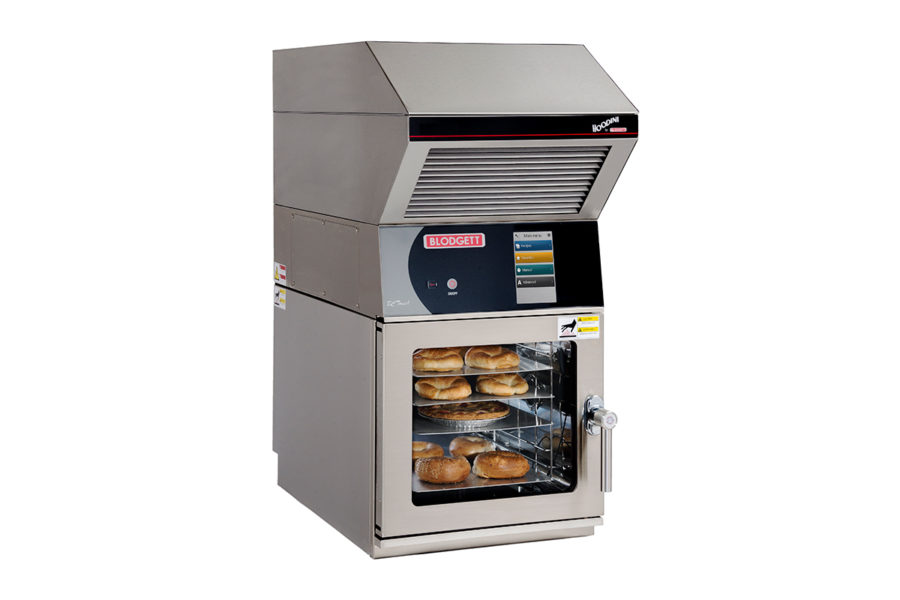
BLODGETT
Measuring only about 20-in.W x 32-in.D x 27-in.H, the BLCT-6E combi oven fits into narrow spaces. It holds five 12 x 20 (2-in.D) or four 12 x 20 (2½-in.D) hotel pans. From the easy-to-clean glass and stainless surfaces to the long-lasting components inside, the combis offer reliability, long service life and low energy consumption. The optional Hoodini ventless system combines a catalytic converter and a condensate hood and doesn’t require a filter.
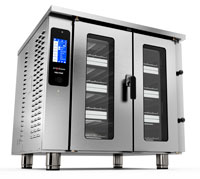
ALTO-SHAAM
Alto-Shaam’s smallest Combitherm oven, the CT Express, has the ability to bake, steam, poach, grill, braise, oven fry, smoke and more. The EcoSmart design uses less electricity than competitive models, according to the company. Reduce labor and improve safety with automatic self-cleaning. The CTX4-10E accommodates up to 10 half-size sheet pans or five full-size hotel pans; exterior dimensions are 24⅜-in.W x 37¼-in.D x 33½-in.H. Units come with an optional ventless hood.
RELATED CONTENT
- Advertisement -
- Advertisement -
- Advertisement -
TRENDING NOW
- Advertisement -
- Advertisement -
- Advertisement -

